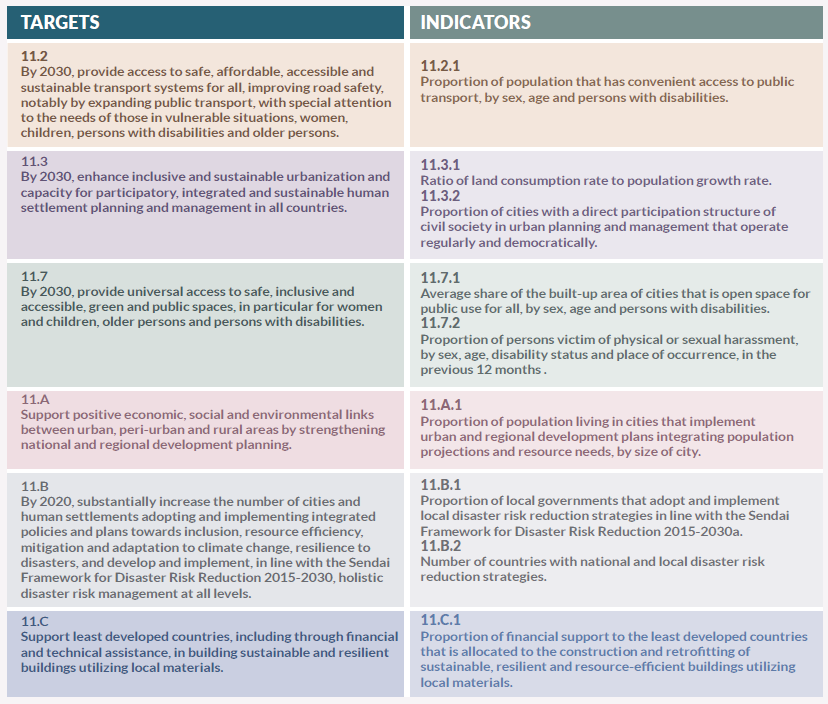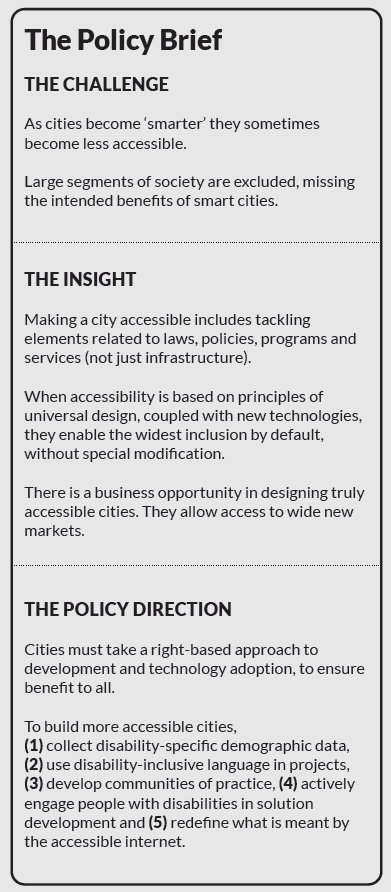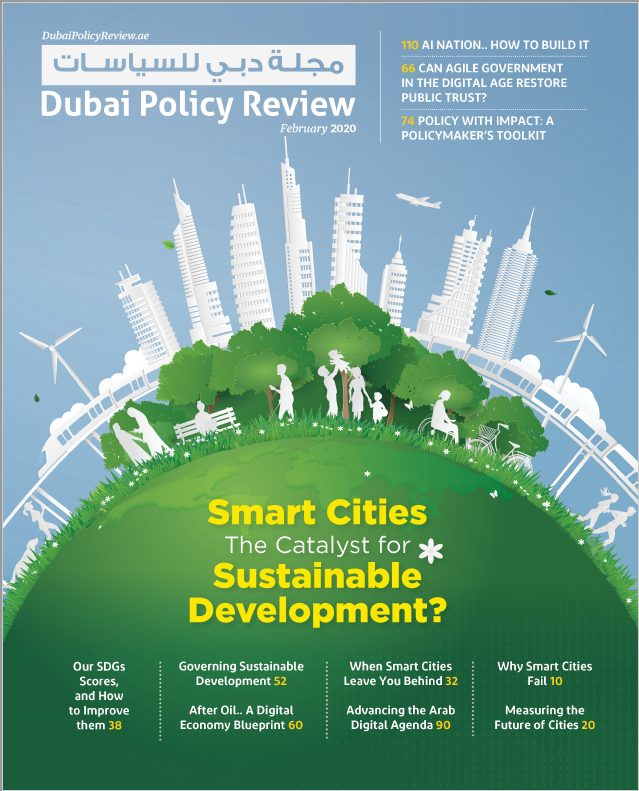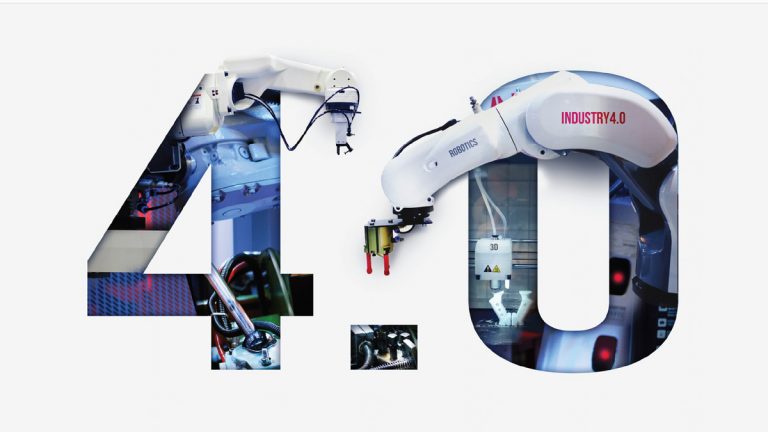Are cities becoming smarter, but less accessible? With more than half of the global population living in cities and towns today, the impact of urbanization on society is undeniable. Countries in Africa and Asia will experience this trend most acutely in the coming years, representing 90% of this global shift. Local governments are struggling to reinvent public services under these new conditions, particularly for the most marginalized residents. Of these marginalized groups, persons with disabilities are a diverse community representing 15% of the global population, with 80% living in the Global South. More than half of all persons with disabilities now live in cities and towns; a number that is expected to grow to 1 billion by 2030.[1] Persons with disabilities face multiple forms of discrimination and exclusion because of inaccessibility in the built, digital and social environments. With these trends and estimates disrupting the development agenda, we must ensure that cities are centers of human flourishing that guarantee universal access to the living standards and unique opportunities that cities generate. As more of these global urban centers move towards becoming "smart cities" at rapid pace, policymakers need to make sure that the rush towards "smarter" cities does not exclude a large group of their populations. How can they do this?
"persons with disabilities are a diverse community representing 15% of the global population, with 80% living in the Global South"
Policy Instruments for Inclusive Innovation: A Rights-based Approach towards Better Smart Cities
Investments and innovations in technology by governments are reshaping the way we see urban development, get to work, access public services and generate income. Under the SDGs umbrella, technology shifts are creating an unprecedented opportunity to implement Sustainable Development Goal #11 on Inclusive and Resilient Cities, in partnership with local governments. Empowering local governments and local communities in implementing the SDGs will also contribute to improving human rights, ensuring good governance, enhancing civic engagement and furthering inclusive economic growth. As technology becomes more embedded in urban areas, we must take a rights-based approach to the way we build our cities. For example, putting in place anti-discrimination laws to protect a child’s right to an education alongside their non-disabled peers. This also includes training for teachers, and ensuring that computer or digital infrastructures have accessibility features such as text-to-speech, captioning on educational material, and even voice and other alternative inputs/outputs for online or computer based learning.
"we must take a rights-based approach to the way we build our cities"
Accessibility is not simply something that is embedded in city infrastructure like providing accessible buses or buildings. It includes policies, programs, and services to be built using the principles of universal design. As such, the end products, programs, or services allow for the widest number of users to engage without specialized modification.
The Convention on the Rights of Persons with Disabilities is one of the first human rights treaties to recognize the accessibility of technology as a human right. Since 2002, through World Enabled we helped governments around the world implement this treaty. The focus on technology in the Convention highlights the importance of digitalization for meaningful participation.
Leveraging technology to help solve the inclusion targets of the sustainable development goals will add impact and scale our efforts if accessibility is brought into the design phase. Access and inclusion are central to our new digital world, and building a more sustainable and inclusive urban future for all.
Targets and Indicators for Sustainable Development Goal 11: Make cities and human settlements inclusive, safe, resilient and sustainable[2]

Globally, a variety of international, national, and local policies and standards exist on digital accessibility. These standards are in the process of being harmonized – the EU and the US are coordinating to harmonize 95% of their digital accessibility regulations. Digital accessibility standards like US Section 508 and the EU’s EN 301549[3] ensure the availability and usability of web and mobile content to all. These standards are now nearly universally harmonized. These efforts at standardization are speeding up innovation and leading to improvements that are benefiting everyone such as text to speech and predictive text technologies. New approaches to Inclusive Innovation are asking the important questions: How can Artificial Intelligence or Blockchain technologies improve the lives of people who can’t see well, hear well, or move around without assistance?
"How can Artificial Intelligence or Blockchain technologies improve the lives of people who can’t see well, hear well, or move around without assistance?"
Beyond Development and Rights: The 9 Trillion Dollars Business Case for Accessible Smart Cities
Accessible smart cities are not just a matter of sensible and sustainable development. They are not just a matter of human rights. In fact, accessible smart cities are good for business too. Take Dubai for example. With the passage of Dubai Law No. 2 of 2014 Concerning Protection of the Rights of Persons with Disabilities, and the Dubai Disability Strategy 2020, the emirate has a vested interest in leading the conversation and demonstrating how technology can build smarter, accessible and inclusive cities. By building in accessibility standards into government procurement policies and standardizing digital platforms in line with global access requirements, Dubai is bridging the divide between people with disabilities and those without.
These advances are not only the result of standard compliance, but also data analysis that turned the attention of the private sector to the opportunity to access a new global market of persons with disabilities, which with their immediate families, have an annual disposable income of USD 9 trillion dollars. Accessibility in this regard is not only a human right – it’s also good for business. City and national governments, that develop accessibility-related regulations and compliance mechanisms are creating a market for businesses to bridge the digital divide. In return, this tie between development, human rights and business objectives has led to substantial investments in accessible technology from large companies such as Microsoft, Google and Accenture. In other words, investing in inclusiveness and accessibility ensures a major return of investment for cities, which activates a whole ecosystem.
How Can Smart Cities Love Everyone Back?
A Policy Roadmap to "Leaving No One Behind" through Digital Transformation
Everyone loves a smart city. How can we get the smart city to love everyone, including its people with disability? In our quest to building inclusive smart cities, have we found the formula for inclusion through the SDGs’ mandate to ‘leave no one behind’ and digital transformation? Digital accessibility standards are gaining traction, but accessibility and disability must be mainstreamed in the development agenda. Development agencies and industry, in co-ordination with national and local governments and civil society organizations, have a key role in bridging the digital divide through inclusive financing and implementation of major projects across the world.
In "Digital Development for All" a study conducted by the Inclusive Cities Lab at the University of California Berkeley[4], researchers found that out of the 1,200 active digital development projects only 4% make mention to persons with disabilities as beneficiaries. Along with this study, the Smart Cities for All Initiative surveyed 180 smart city and digital accessibility experts and found that less than 20% of them knew of smart city initiatives that utilized international standards on ICT Accessibility. How can we bridge this awareness gap?
Both development agencies and governments must make accessibility a priority in their digitalization initiatives if we are to truly leave no one behind. Stronger partnerships between different stakeholders including the private sector, civil society and academia are key in further developing the tools and data to support municipalities and development practitioners in turning accessible strategies into action.
What are some proactive steps in generating a greater commitment to operationalize digital accessibility towards inclusion?
- Collect Disability-specific Data: Disaggregate data on disability, along with gender, age and geography, which point to the benefits of digital accessibility for socioeconomic inclusion.
- Use Disability-inclusive Language: Utilize disability-inclusive language in project documents and safeguards.
- Develop Digital Accessibility Communities of Practice: Make use of peer learning networks and knowledge sharing to enhance awareness and build communities of practice on benefits and programs on digital accessibility by connecting governments, the private sector, academia and organizations of persons with disabilities (DPOs) and older persons.
- Redefine the Accessible Internet: Accessibility should also be considered alongside internet affordability (a common developmental target). Accessibility to information and the internet should consider the amount of people (including those with disability) that have access to the internet and access to the information available on the in Internet
- Follow an Inclusive Digital Transformation Route: Actively engage and involve persons with disabilities and older persons in the development of solutions guiding digital transformation across the design and development processes.
Dear City Builders: Your Four Guiding Questions for Building Inclusive Smart Cities
As policymakers develop and implement strategies and initiatives to improve accessibility towards smarter cities, they may need to ask themselves the following questions along the journey:
- Did you ensure the disaggregation of data (specifically for people with disabilities) while also guaranteeing privacy of the sensitive data of each group?
- Did you build sustained partnerships between developmental agencies and organizations of persons with disabilities and older persons? If not, how can we improve this?
- Are the financial budgets of governments and developmental agencies being properly allocated to ensure "no one" is left behind in digital development efforts, particularly persons with disabilities?
- How can you use digital technology to create a tangible way to monitor inclusion?

Victor Pineda is the President of World Enabled and President of the Global Alliance on Accessible Technologies and Environments (GAATES). Read full bio here.
Federico Poitier is the Director for Partnerships at World Enabled. Read full bio here.
Endnotes:
[1] World Health Organization and World Bank., World Report on Disability (Geneva, Switzerland: World Health Organization, 2011): http://whqlibdoc.who.int/publications/2011/9789240685215_eng.pdf
[2] Selected targets and indicators of Sustainable Development Goal 11: Make cities and human settlements inclusive, safe, resilient and sustainable: https://sustainabledevelopment.un.org/sdg11
[3] More about these standards and download the digital inclusion toolkit at www.smartcities4all.org
[4] The study "Digital Development for All: Leveraging Digital Development in International Development" is available through the OECD Secretariat: https://medium.com/@worldenabled/digital-development-for-all-leveraging-digital-accessibility-in-international-development-bc909d610081













You must be logged in to post a comment.